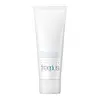What's inside
What's inside
 Key Ingredients
Key Ingredients

 Benefits
Benefits

 Concerns
Concerns

 Ingredients Side-by-side
Ingredients Side-by-side

Water
Skin ConditioningEthylhexyl Methoxycinnamate
UV AbsorberButylene Glycol
HumectantEthylhexyl Salicylate
UV AbsorberC12-15 Alkyl Benzoate
AntimicrobialAlcohol
AntimicrobialHomosalate
Skin ConditioningDiethylamino Hydroxybenzoyl Hexyl Benzoate
UV FilterOctocrylene
UV AbsorberCI 77891
Cosmetic ColorantCyclomethicone
Emollient1,2-Hexanediol
Skin ConditioningPolymethylsilsesquioxane
Viscum Album Leaf Extract
SoothingPortulaca Oleracea Extract
Skin ConditioningCentella Asiatica Extract
CleansingPolyacrylate-13
Caprylic/Capric/Succinic Triglyceride
EmollientAluminum Stearate
Cosmetic ColorantParfum
MaskingPhenoxyethanol
PreservativePolyhydroxystearic Acid
EmulsifyingBis-PEG-15 Dimethicone/Ipdi Copolymer
Glycerin
HumectantSorbitan Oleate
EmulsifyingOctyldodecanol
EmollientPolyisobutene
Behenyl Alcohol
EmollientAlumina
AbrasiveInulin Lauryl Carbamate
Emulsion StabilisingEthylhexylglycerin
Skin ConditioningSodium Stearoyl Glutamate
CleansingPolysorbate 20
EmulsifyingEchium Plantagineum Seed Oil
Skin ConditioningAloe Barbadensis Leaf Extract
EmollientSodium Hyaluronate
HumectantHelianthus Annuus Seed Oil Unsaponifiables
EmollientCardiospermum Halicacabum Flower/Leaf/Vine Extract
Skin ConditioningHelianthus Annuus Seed Oil
EmollientCamellia Japonica Leaf Extract
Skin ConditioningOpuntia Coccinellifera Fruit Extract
Skin ConditioningOrchid Extract
Skin ConditioningCitrus Unshiu Peel Extract
MaskingCamellia Sinensis Leaf Extract
AntimicrobialWater, Ethylhexyl Methoxycinnamate, Butylene Glycol, Ethylhexyl Salicylate, C12-15 Alkyl Benzoate, Alcohol, Homosalate, Diethylamino Hydroxybenzoyl Hexyl Benzoate, Octocrylene, CI 77891, Cyclomethicone, 1,2-Hexanediol, Polymethylsilsesquioxane, Viscum Album Leaf Extract, Portulaca Oleracea Extract, Centella Asiatica Extract, Polyacrylate-13, Caprylic/Capric/Succinic Triglyceride, Aluminum Stearate, Parfum, Phenoxyethanol, Polyhydroxystearic Acid, Bis-PEG-15 Dimethicone/Ipdi Copolymer, Glycerin, Sorbitan Oleate, Octyldodecanol, Polyisobutene, Behenyl Alcohol, Alumina, Inulin Lauryl Carbamate, Ethylhexylglycerin, Sodium Stearoyl Glutamate, Polysorbate 20, Echium Plantagineum Seed Oil, Aloe Barbadensis Leaf Extract, Sodium Hyaluronate, Helianthus Annuus Seed Oil Unsaponifiables, Cardiospermum Halicacabum Flower/Leaf/Vine Extract, Helianthus Annuus Seed Oil, Camellia Japonica Leaf Extract, Opuntia Coccinellifera Fruit Extract, Orchid Extract, Citrus Unshiu Peel Extract, Camellia Sinensis Leaf Extract
Glycerin
HumectantPotassium Cocoyl Glycinate
Water
Skin ConditioningButylene Glycol
HumectantPolyglyceryl-10 Myristate
Skin ConditioningDisodium Lauryl Sulfosuccinate
CleansingGlyceryl Stearate
EmollientCitric Acid
BufferingNiacinamide
SmoothingTuna Extract
Skin ConditioningCnidium Officinale Rhizome Extract
Skin ConditioningCapsicum Annuum Fruit Extract
AntimicrobialDipotassium Glycyrrhizate
HumectantPisum Sativum Extract
Skin ConditioningTriticum Vulgare Germ Extract
Skin ConditioningGlycerin, Potassium Cocoyl Glycinate, Water, Butylene Glycol, Polyglyceryl-10 Myristate, Disodium Lauryl Sulfosuccinate, Glyceryl Stearate, Citric Acid, Niacinamide, Tuna Extract, Cnidium Officinale Rhizome Extract, Capsicum Annuum Fruit Extract, Dipotassium Glycyrrhizate, Pisum Sativum Extract, Triticum Vulgare Germ Extract
Alternatives
Ingredients Explained
These ingredients are found in both products.
Ingredients higher up in an ingredient list are typically present in a larger amount.
Butylene Glycol (or BG) is used within cosmetic products for a few different reasons:
Overall, Butylene Glycol is a safe and well-rounded ingredient that works well with other ingredients.
Though this ingredient works well with most skin types, some people with sensitive skin may experience a reaction such as allergic rashes, closed comedones, or itchiness.
Learn more about Butylene GlycolGlycerin is already naturally found in your skin. It helps moisturize and protect your skin.
A study from 2016 found glycerin to be more effective as a humectant than AHAs and hyaluronic acid.
As a humectant, it helps the skin stay hydrated by pulling moisture to your skin. The low molecular weight of glycerin allows it to pull moisture into the deeper layers of your skin.
Hydrated skin improves your skin barrier; Your skin barrier helps protect against irritants and bacteria.
Glycerin has also been found to have antimicrobial and antiviral properties. Due to these properties, glycerin is often used in wound and burn treatments.
In cosmetics, glycerin is usually derived from plants such as soybean or palm. However, it can also be sourced from animals, such as tallow or animal fat.
This ingredient is organic, colorless, odorless, and non-toxic.
Glycerin is the name for this ingredient in American English. British English uses Glycerol/Glycerine.
Learn more about GlycerinWater. It's the most common cosmetic ingredient of all. You'll usually see it at the top of ingredient lists, meaning that it makes up the largest part of the product.
So why is it so popular? Water most often acts as a solvent - this means that it helps dissolve other ingredients into the formulation.
You'll also recognize water as that liquid we all need to stay alive. If you see this, drink a glass of water. Stay hydrated!
Learn more about Water